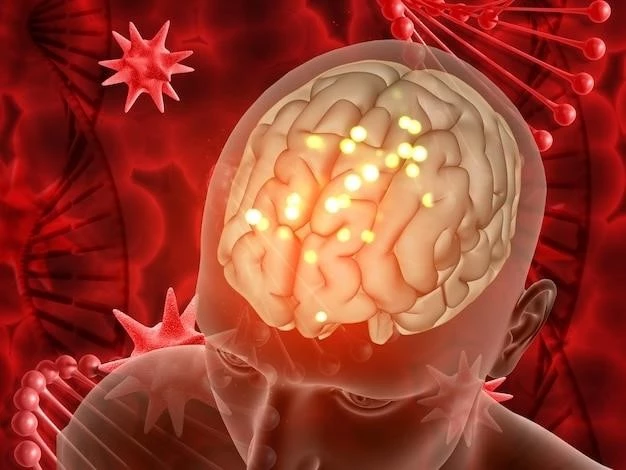Article Plan⁚ Disease ⎯ Subcortical Laminar Heterotopia

Overview of Subcortical Laminar Heterotopia
Subcortical laminar heterotopia‚ also known as subcortical band heterotopia or double cortex‚ is a rare congenital malformation of cortical development primarily found in females. This condition is characterized by the presence of symmetrical bands of heterotopic gray matter located between the ventricular wall and the cortical mantle. Subcortical band heterotopia is a result of interrupted migration of neurons during gestation‚ particularly between the third to fifth months. The condition may lead to a range of clinical presentations‚ from mild cognitive deficits to severe intellectual disability‚ seizures‚ and behavioral issues.
Gray matter heterotopia‚ including subcortical laminar heterotopia‚ are malformations resulting from the premature arrest of neuronal migration during brain development. This condition is classified into nodular‚ laminar‚ and subcortical band heterotopia. The identification of causative genes for this disorder has advanced molecular-biological studies on neuronal migration‚ leading to improved understanding of the underlying molecular mechanisms.
Inheritance patterns of subcortical band heterotopia depend on its genetic causes. Mutations in genes like DCX can result in an X-linked dominant inheritance pattern. Individuals with this condition typically present with epilepsy and varying degrees of mental retardation. Non-pharmacological treatment options for drug-resistant epilepsy in subcortical band heterotopia are also under investigation to improve patient outcomes.

Diagnostic methods for subcortical laminar heterotopia often involve imaging studies like MRI‚ which can reveal distinct radiological features differentiating it from other cortical malformations. It is crucial to differentiate this disorder from lissencephaly type I-subcortical band heterotopia spectrum due to differences in imaging and genetic levels. Despite challenges in diagnosis and treatment‚ ongoing research aims to further the understanding and management of this rare neurodevelopmental disorder.
Clinical Manifestations
Individuals with subcortical laminar heterotopia may present with a variety of clinical manifestations‚ ranging from mild cognitive deficits to severe intellectual disability‚ epilepsy‚ and behavioral issues. The condition predominantly affects females and is often associated with drug-resistant epilepsy. Seizures‚ including atonic and generalized tonic-clonic seizures‚ are common in patients with subcortical laminar heterotopia.
Neurological symptoms such as developmental delay‚ intellectual impairment‚ and psychiatric concerns may also be observed in individuals with subcortical band heterotopia. The severity of clinical presentations can vary widely among affected individuals‚ with some experiencing milder symptoms while others may face more debilitating challenges.
In some cases‚ subcortical laminar heterotopia can be associated with additional cortical or cerebral malformations‚ such as polymicrogyria or focal dysplasia. These accompanying malformations can further contribute to the complexity of clinical manifestations and overall prognosis for affected individuals.
It is crucial for healthcare providers to carefully evaluate and monitor individuals with subcortical laminar heterotopia to address their unique clinical needs effectively. Management strategies may include a multidisciplinary approach involving neurologists‚ genetic counselors‚ and mental health professionals to provide comprehensive care and support for individuals living with this challenging neurodevelopmental disorder.
Genetic Causes
Subcortical laminar heterotopia‚ also known as subcortical band heterotopia or double cortex‚ is primarily associated with genetic mutations that affect neuronal migration during early brain development. The DCX gene‚ located on the X chromosome‚ plays a significant role in the pathogenesis of this condition. Mutations in the DCX gene can lead to an X-linked dominant inheritance pattern in affected individuals‚ primarily females.
Individuals with subcortical laminar heterotopia may also present with variations in genes such as LIS1‚ which could contribute to the manifestation of this neurodevelopmental disorder. The genetic defects associated with subcortical laminar heterotopia result in disrupted migration of neurons‚ leading to the formation of heterotopic gray matter bands in the brain.
Understanding the genetic underpinnings of subcortical laminar heterotopia has advanced molecular-biological research in the field of neuronal migration disorders. The identification of causative genes has provided insights into the intricate molecular mechanisms involved in brain development and the specific disruptions that lead to the formation of subcortical band heterotopia.
Further research is ongoing to elucidate additional genetic factors that may contribute to the development of subcortical laminar heterotopia‚ as well as to explore potential gene therapies or targeted interventions to address the underlying genetic abnormalities associated with this rare cortical malformation.
Terminology Confusion
There is a degree of confusion in the terminology surrounding subcortical laminar heterotopia‚ also known as subcortical band heterotopia or double cortex. Some authors use the term interchangeably with laminar heterotopia. It is essential to clarify that band heterotopia is best understood in the context of the lissencephaly type I ⸺ subcortical band heterotopia spectrum. The genetic defects underlying both conditions are often similar‚ stemming from arrested neuronal migration.
Gray matter heterotopia classification includes nodular‚ laminar‚ leptomeningeal‚ or double cortex forms‚ each representing distinct malformations resulting from disruptions in neuronal migration during brain development. Radiologically‚ band heterotopia presents as smooth layers of gray matter that are visually different from subcortical heterotopia. Understanding these distinctions aids in accurate diagnosis and appropriate management strategies.
It is important to differentiate subcortical laminar heterotopia from other cortical malformations to provide tailored medical care. While the terminology may vary among medical professionals and researchers‚ a precise understanding of the specific characteristics and diagnostic criteria for subcortical band heterotopia is crucial for effective clinical management and research endeavors.
Inheritance Patterns
The inheritance pattern of subcortical band heterotopia‚ also known as subcortical laminar heterotopia‚ can vary depending on its genetic causes. In cases where mutations in the DCX gene are responsible for the condition‚ inheritance follows an X-linked dominant pattern. The DCX gene‚ located on the X chromosome‚ plays a crucial role in neuronal migration during brain development.
For individuals with subcortical band heterotopia resulting from mutations in the DCX gene‚ the altered gene is typically passed down in an X-linked dominant manner. Females‚ who carry two X chromosomes‚ are more commonly affected by this genetic abnormality. Understanding the genetic basis of subcortical laminar heterotopia is essential for accurate diagnosis and potentially targeted treatment strategies.
Research into the genetic underpinnings of subcortical band heterotopia continues to expand our knowledge of the intricate mechanisms involved in neuronal migration disorders. Clarifying the inheritance patterns associated with specific genetic mutations aids in genetic counseling‚ diagnostic accuracy‚ and the development of future therapeutic interventions for individuals affected by this rare neurological condition.
Radiological Distinctions
Radiologically‚ subcortical laminar heterotopia‚ also known as subcortical band heterotopia‚ presents as distinct from other cortical malformations. In imaging studies‚ it is visualized as smooth layers of gray matter‚ typically oriented symmetrically between the ventricular wall and the cortical mantle. This distinguishing radiological feature sets it apart from other forms of cortical malformations‚ aiding in accurate diagnosis and classification.
Band heterotopia is characterized by the presence of these smooth layers of gray matter‚ demonstrating a clear separation from the surrounding structures. Understanding these radiological distinctions is crucial in differentiating subcortical laminar heterotopia from other conditions such as lissencephaly and focal dysplasia‚ ensuring appropriate management strategies and targeted interventions for affected individuals.
Radiological imaging plays a key role in the accurate diagnosis of subcortical band heterotopia‚ allowing healthcare providers to visualize the specific abnormalities in brain structure associated with this rare neurodevelopmental disorder. Continued research and advancements in imaging technologies contribute to the enhanced detection and characterization of subcortical laminar heterotopia‚ facilitating comprehensive care for individuals affected by this condition.
Neurological Implications
Subcortical laminar heterotopia‚ also referred to as subcortical band heterotopia‚ can have significant neurological implications for affected individuals. This rare neurodevelopmental disorder is often associated with drug-resistant epilepsy‚ which can manifest as various seizure types‚ including atonic and generalized tonic-clonic seizures. The neurologic manifestations of the condition may present differently based on individual cases.
In addition to epilepsy‚ individuals with subcortical laminar heterotopia may experience developmental delays‚ intellectual impairment‚ and behavioral challenges. The severity of these neurological symptoms can vary widely among patients‚ impacting their overall quality of life and long-term prognosis.
Neurological implications of subcortical band heterotopia can extend beyond seizures and cognitive deficits‚ potentially leading to psychiatric concerns and emotional regulation difficulties in some individuals. Comprehensive neurological assessments‚ including EEG monitoring and imaging studies‚ are often necessary to evaluate the extent of neurological involvement and guide treatment decisions.
Effective management of the neurological implications associated with subcortical laminar heterotopia requires a multidisciplinary approach involving neurologists‚ epileptologists‚ neuropsychologists‚ and other healthcare professionals. Tailored treatment plans and ongoing neurological support are essential to address the diverse needs of individuals living with this complex neurodevelopmental disorder.
Diagnostic Methods
Diagnosing subcortical laminar heterotopia typically involves a combination of clinical assessments‚ neuroimaging studies‚ and genetic testing. Magnetic resonance imaging (MRI) plays a crucial role in visualizing the distinct radiological features of this brain malformation. Radiologically‚ subcortical band heterotopia presents as smooth layers of gray matter‚ differentiating it from other cortical malformations.
Neurological evaluations‚ including electroencephalograms (EEGs) and thorough neurologic examinations‚ are essential in assessing the extent of neurological manifestations associated with subcortical laminar heterotopia. EEG monitoring helps identify seizure activity and characterize the specific seizure types experienced by the individual.
Genetic testing may be recommended to identify mutations in genes such as DCX or LIS1 that are associated with subcortical band heterotopia. Understanding the genetic basis of the condition can aid in confirming the diagnosis and providing valuable information for genetic counseling and family planning.
Additionally‚ differentiating subcortical laminar heterotopia from other cortical malformations‚ such as lissencephaly type I-subcortical band heterotopia spectrum‚ is crucial for accurate diagnosis and targeted treatment approaches. Collaborative efforts involving neurologists‚ neuroradiologists‚ geneticists‚ and other specialists are often necessary to ensure a comprehensive diagnostic evaluation and management plan for individuals with this complex neurodevelopmental disorder.
Treatment Approaches
The treatment of subcortical laminar heterotopia‚ also known as subcortical band heterotopia‚ often involves a multidisciplinary approach to address the complex clinical manifestations associated with this neurodevelopmental disorder. Management strategies aim to mitigate symptoms and improve the quality of life for affected individuals‚ with a particular focus on addressing drug-resistant epilepsy‚ a common comorbidity.
Pharmacological interventions‚ such as antiepileptic medications‚ are frequently utilized to manage seizures in individuals with subcortical band heterotopia. However‚ given the challenges of drug-resistant epilepsy in this population‚ non-pharmacological treatment options may also be explored to enhance seizure control and overall neurological outcomes.
Surgical interventions‚ including corpus callosotomy‚ may be considered in cases where seizures are refractory to medication and significantly impact the individual’s quality of life. Corpus callosotomy has shown promise in reducing atonic and generalized tonic-clonic seizures in some patients with subcortical laminar heterotopia.
Behavioral therapies‚ cognitive interventions‚ and educational support are essential components of the treatment approach for individuals with subcortical band heterotopia‚ aiming to address cognitive deficits‚ developmental delays‚ and behavioral challenges that may arise as a result of the condition. Comprehensive care plans tailored to the individual’s specific needs are crucial for optimizing therapeutic outcomes and promoting overall well-being.
Non-pharmacological Interventions
Non-pharmacological interventions play a crucial role in the comprehensive management of individuals with subcortical laminar heterotopia‚ particularly those dealing with drug-resistant epilepsy. Behavioral therapies‚ including cognitive behavioral interventions and psychoeducational support‚ can help address cognitive deficits and emotional regulation challenges often seen in affected individuals.
For individuals with subcortical band heterotopia‚ educational and developmental interventions are essential components of non-pharmacological treatment approaches. Specialized educational programs tailored to the individual’s cognitive abilities and learning needs can support academic progress and social development.
Speech and language therapy may be recommended to address communication difficulties that can arise as a result of the condition. Occupational therapy and physical therapy interventions can help improve motor skills‚ coordination‚ and daily living activities for individuals with subcortical laminar heterotopia.
Additionally‚ non-pharmacological interventions such as cognitive remediation programs and social skills training can enhance overall functioning and quality of life for individuals with subcortical band heterotopia. Collaborative care involving a multidisciplinary team of healthcare professionals is essential to provide comprehensive non-pharmacological support for individuals living with this complex neurodevelopmental disorder.
Research Advancements
Ongoing research into subcortical laminar heterotopia‚ also referred to as subcortical band heterotopia‚ has led to advancements in understanding the genetic and neurodevelopmental aspects of this rare condition. Recent studies have focused on identifying specific genetic defects associated with neuronal migration disorders‚ shedding light on the molecular mechanisms underlying subcortical band heterotopia.
Advancements in molecular-biological research have enabled the identification of causative genes‚ such as DCX and LIS1‚ linked to subcortical laminar heterotopia. This genetic insight has paved the way for the development of novel gene therapies and targeted interventions aimed at addressing the genetic abnormalities contributing to the disorder.
Research efforts have also explored non-pharmacological treatment options for drug-resistant epilepsy in individuals with subcortical band heterotopia. Studies have investigated the efficacy of interventions like corpus callosotomy to reduce seizure frequency and improve the quality of life for patients with refractory epilepsy.
Moreover‚ the expanding knowledge of the radiological and clinical manifestations of subcortical laminar heterotopia has informed ongoing research initiatives focused on optimizing diagnostic methods and treatment approaches. Collaborative research endeavors involving multidisciplinary teams are crucial for advancing our understanding of this complex neurodevelopmental disorder and enhancing patient outcomes through innovative research-based interventions.
Support and Information Resources
For individuals and families affected by subcortical laminar heterotopia‚ accessing reliable support and information resources is essential for navigating the complexities of this rare neurodevelopmental disorder. Organizations like Orphanet provide detailed insights into the clinical manifestations and genetic aspects of subcortical band heterotopia‚ offering valuable information for patients and healthcare providers.
MedlinePlus Genetics offers accessible resources on subcortical band heterotopia‚ facilitating a better understanding of the genetic basis of the condition and its inheritance patterns. Additionally‚ online platforms like ScienceDirect.com provide in-depth articles on the pathophysiology and radiological distinctions of subcortical laminar heterotopia‚ aiding in comprehensive knowledge acquisition.
Seeking support from genetic counseling services can assist individuals and families in understanding the inheritance patterns and implications of subcortical band heterotopia. Support groups and community forums may offer a platform for sharing experiences‚ fostering connections‚ and accessing emotional support from others facing similar challenges.
Health information centers such as GARD (Genetic and Rare Diseases Information Center) provide personalized assistance and resources for individuals seeking guidance on subcortical laminar heterotopia. GARD’s team of Information Specialists can offer tailored support and information to help individuals make informed decisions about their care and management of this complex neurodevelopmental disorder.
